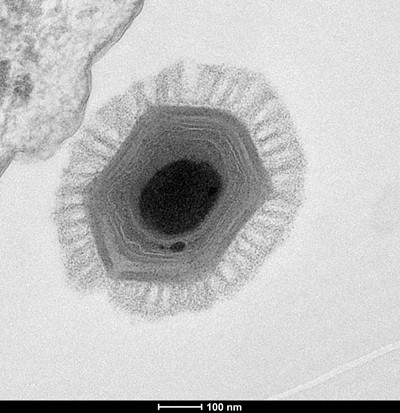Scientists Discover Unique Giant Virus That Could be From Space

A new virus discovered by French scientists could be the biggest yet encountered on Earth.
Dubbed Pandoravirus, only 6% of its genes have anything in common with the rest of life on this planet, leading researchers to believe it has either remained in its original state from a historic era, or is from a different planet altogether.
According to a report by the Mail Online, the Pandoravirus is a micrometre in length, making it 10 times the size of any other known virus. It is clearly visible under a basic microscope.
The virus has been spotted in two places so far - off the coast of Chile and in a pond in Australia.
"We believe these new Pandoraviruses have emerged from a new ancestral cellular type that no longer exists," Dr Jean-Michel Claverie of Aix-Marseille University told National Public Radio (NPR). Claverie also said he mistook the virus for a small bacterium initially, because of its unique shape.
It is believed the Pandoravirus is both different in shape to any other known virus and boasts a genetic code twice the size of the Megavirus, the previously largest known virus (440 nanometres).
However, scientists are quick to caution the new virus poses no threat to humanity.
"This is not going to cause any kind of widespread and acute illness or epidemic or anything," Eugene Koonin, a specialist in viruses and an evolutionary biologist at the National Institutes of Health, told NPR.
The hunt for the Pandoravirus began after scientists took samples from the two locations mentioned above. These were mixed with antibiotics to rule out bacteria and the remaining samples were exposed to amoebas.
"If they die, we suspect that there's something in there that killed them," Chantal Abergel, Claverie's co-author, said.
The experiments resulted in infected amoebae that spawned the Pandoravirus.
"At this point we cannot actually disprove or disregard this type of extreme scenario," Claverie added, referring to the possibility the virus is extraterrestrial in origin.
As of now, other possible explanations include evolution from a cellular form as part of a survival strategy and tangential development after picking up genetic material from unknown hosts.
Meanwhile, Claverie now wants to identify the virus's function in the wild. The virus is found in both fresh and salt water ecosystems, meaning it could be a catalyst of some sort.
© Copyright IBTimes 2025. All rights reserved.





















